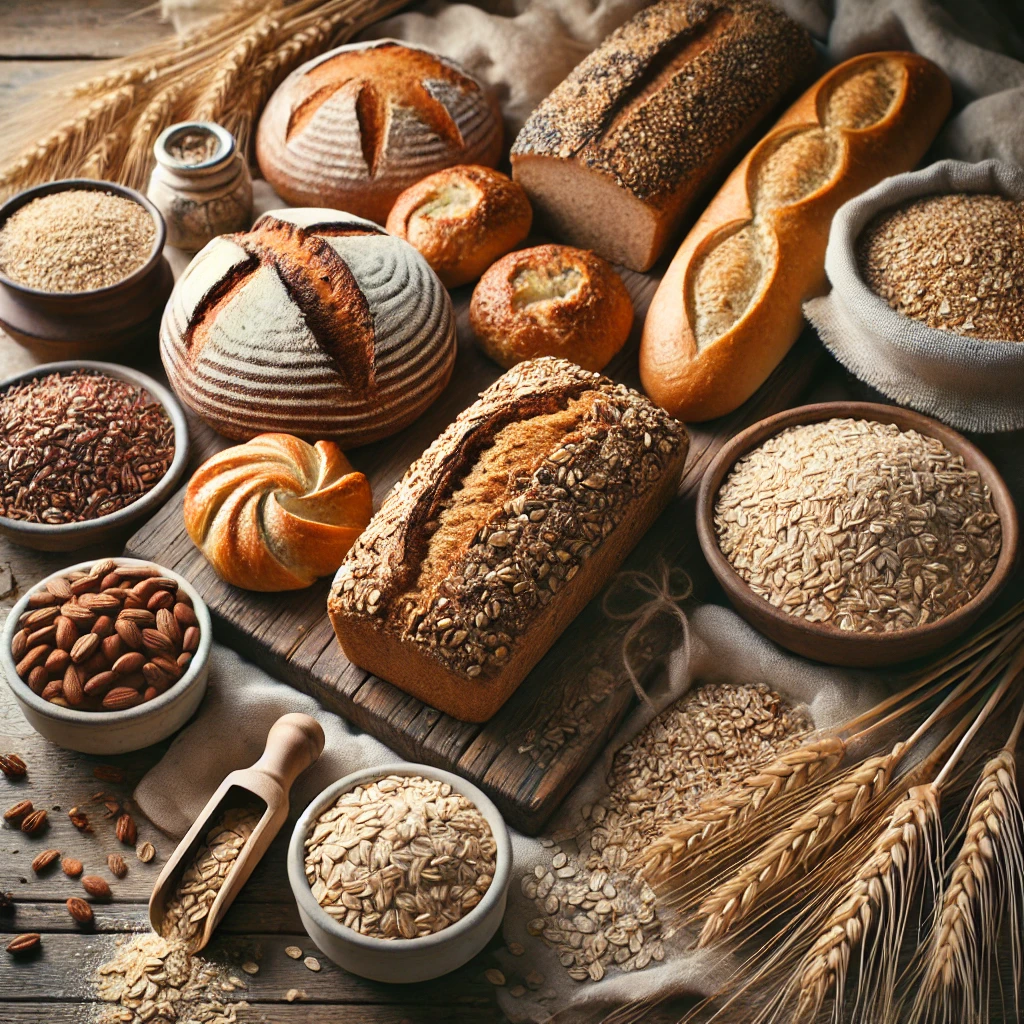Glycaemic Index (GI) and Glycaemic Load (GL) for Managing Gestational Diabetes

When it comes to which carbohydrates to choose for the management of gestational diabetes, quality and quantity really counts.
To help determine the quality of the carbohydrate, focusing on those which have a low glycaemic index (GI) can help – see below for examples.
To determine the quantity of carbohydrate, there are a few approaches you can take:
- Aim for a fist-sized portion of carbohydrate per meal or try to fill ¼ of your plate with carbohydrate foods.
- Work out the glycaemic load (GL) and modify portions to fit within the low GL category.
- Aim for 30-45g carbohydrate per meal and 15-20g for snacks.
Glycaemic Index (GI)
GI ranks carbohydrate-containing foods based on their effect on blood glucose levels.
Foods are classified as:
- Low GI: ≤55
- Medium GI: 56–69
- High GI: ≥70
Low GI foods are preferable as they release glucose into the bloodstream slowly, helping to maintain stable blood sugar levels.
Examples of different carbohydrates and their glycaemic index can be found in the table below:
Carbohydrates by Glycaemic Index
| Category | Low GI (≤55) | Medium GI (56–69) | High GI (≥70) |
|---|---|---|---|
| Grains | Rolled oats, Wholegrain basmati rice, Wholewheat pasta, Pearl barley, Quinoa, Bulgar wheat | New potatoes, Couscous | White rice, Instant oats |
| Breads | Granary bread, Seeded wholemeal bread, Rye bread, Wholegrain sourdough | Wholemeal bread, White sourdough | White bread, Bagels, French baguette |
| Legumes & Pulses | Lentils, Chickpeas, Butter beans, Kidney beans, Black beans | Baked beans (in sauce) | |
| Root Vegetables | Sweet potato, Butternut squash, Carrots | Parsnips, Beetroot | Mashed potatoes, Chips, French fries, Jacket potato |
| Fruit | Any berries, Kiwi, Apples, Oranges, Pears, Plums, Cherries, Grapefruit, Apricots, Nectarines, Peaches | Grapes, Pineapple, Mango, Papaya, Figs, Cantaloupe Melon, Ripe bananas | Dates, Raisins, Watermelon, Very ripe bananas |
| Dairy | Plain unsweetened yoghurt, Cottage cheese, Milk or unsweetened milk alternatives such as soy, Cheese | Low fat fruit yoghurt, Custard | Flavoured milk, Milkshakes, Ice cream |
Glycaemic Load (GL)
GL considers both the GI and the portion size of the carbohydrate consumed, providing a more practical measure of a food’s impact on blood glucose.
It is calculated using the following equation:GL = (GI × carbohydrate portion (g)) / 100
Classifications:
- Low GL: ≤10 per serving
- Medium GL: 11–19
- High GL: ≥20
Examples of low GI and low GL foods with relative serving sizes:
- 40g rolled oats (dry)
- 1x 30g slice wholegrain bread
- 40-50g basmati rice (dry) or 120-150g cooked
- 40-50g wholewheat pasta (dry) or 120-150g cooked
- 50g quinoa (dry) or 150g cooked
- 100g cooked sweet potato
- 100-150g lentils or chickpeas
Other Considerations
- Pairing low GI carbohydrates with a source of lean protein and healthy fats will further help to slow glucose absorption.
Examples of lean proteins:
- Chicken breast (skin removed)
- Turkey (skin removed)
- Fish such as salmon, trout, haddock, cod
- Lean red meat such as sirloin, tenderloin
- Cooked tofu or tempeh
- Legumes such as lentils, chickpeas, kidney beans, black beans, butter beans
- Edamame beans
- Eggs
- Cottage cheese
- Low fat, plain yoghurt
- Skimmed or semi-skimmed milk
Examples of healthy fats:
- Olive oil
- Unsalted nuts such as almonds, walnuts, hazelnuts, macadamias, pecans, pistachios
- Seeds such as pumpkin, sunflower, chia, hemp, sesame
- Avocado
- Oily fish such as sardines, mackerel, salmon, or trout
General Tips:
- Aim for a consistent carbohydrate intake across the day e.g. 30–50g per meal and 15-20g per snack.
- Choose wholegrain and minimally processed foods where possible.
- Be mindful of portion sizes to manage GL as a large portion of a low GI food could still cause a spike in blood sugar.
Benefits:
- Reduces large fluctuations in blood glucose.
- Supports healthy weight gain during pregnancy.
- May lower the need for metformin or insulin therapy.